第80章 CHAPTER XVI A PARASITE OF THE MAGGOT(3)
I consult Oryctes nasicornis, the peaceable rhinoceros beetle, on this subject. To get at the exact nature of the materials, instead of pulverizing the whole insect in a mortar, I use merely the muscular tissue obtained by scraping the inside of the dried Oryctes' corselet. Or else I extract the dry contents of the hind legs. I do the same with the desiccated corpses of the cockchafer, the Capricorn, or Cerambyx beetle, and the Cetonia, or rosechafer.
Each of my gleanings, with a little water added, is left to soften for a couple of days in a watch glass and yields to the liquid whatever can be extracted from it by crushing and dissolving.
This time, we take a great step forward. All my preparations, without distinction, are horribly virulent. Let the reader judge.
I select as my first patient the sacred beetle, Scarabaeus sacer, who thanks to his size and sturdiness, lends himself admirably to an experiment of this kind. I operate upon a dozen, in the corselet, on the breast, on the belly and, by preference, on one of the hind legs, far removed from the impressionable nervous centers.
No matter what part my injector attacks, the effect produced is the same, or nearly. The insect falls as though struck by lightning.
It lies on its back and wriggles its legs, especially the hind legs. If I set it on its feet again, I behold a sort of St.
Vitus' dance. Scarabaeus lowers his head, arches his back, draws himself up on his twitching legs. He marks time with his feet on the ground, moves forward a little, moves as much backward, leans to the right, leans to the left, in wild disorder, incapable of keeping his balance or making progress. And this happens with sudden jerks and jolts, with a vigor no whit inferior to that of the animal in perfect health. It is a displacement of all the works, a storm that uproots the mutual relations of the muscles.
Seldom have I witnessed such sufferings, in my career as a cross-examiner of animals and, therefore, as a torturer. I should feel a scruple, did I not foresee that the grain of sand shifted today may one day help us by taking its place in the edifice of knowledge.
Life is everywhere the same, in the Dung beetle's body as in man's.
To consult it in the insect means consulting it in ourselves, means moving towards vistas which we cannot afford to neglect. That hope justifies my cruel studies, which, though apparently so puerile, are in reality worthy of serious consideration.
Of my dozen sufferers, some rapidly succumb, others linger for a few hours. They are all dead by tomorrow. I leave the corpses on the table, exposed to the air. Instead of drying and stiffening, like the asphyxiated insects intended for our collections, my patients, on the contrary, turn soft and slacken in the joints, notwithstanding the dryness of the surrounding air; they become disjointed and separate into loose pieces, which are easily removed.
The results are the same with the Capricorn, the cockchafer, the Procrustes [a large ground beetle], the Carabus [the true ground beetle, including the gold beetle]. In all of them there is a sudden break-up, followed by speedy death, a slackening of the joints and swift putrefaction. In a non-horny victim, the quick chemical changes of the tissues are even more striking. A Cetonia grub, which resists the scorpion's sting, even though repeatedly administered, dies in a very short time if I inject a tiny drop of my terrible fluid into any part of its body. Moreover, it turns very brown and, in a couple of days, becomes a mass of black putrescence.
The great peacock, that large moth who recks little of the scorpion's poison, is no more able to resist my inoculations than the sacred beetle and the others. I prick two in the belly, a male and a female. At first, they seem to bear the operation without distress. They grip the trellis work of the cage and hang without moving, as though indifferent. But soon the disease has them in its grip. What we see is not the tumultuous ending of the sacred beetle; it is the calm advent of death. With wings slackly quivering, softly they die and drop from the wires. Next day, both corpses are remarkably lax; the segments of the abdomen separate and gape at the least touch. Remove the hairs and you shall see that the skin, which was white, has turned brown and is changing to black. Corruption is quickly doing its work.
This would be a good opportunity to speak of bacteria and cultures.
I shall do nothing of the sort. On the hazy borderland of the visible and the invisible, the microscope inspires me with suspicion. It so easily replaces the eye of reality by the eye of imagination; it is so ready to oblige the theorists with just what they want to see. Besides, supposing the microbe to be found, if that were possible, the question would be changed, not solved. For the problem of the collapse of the structure through the fact of a prick there would be substituted another no less obscure: how does the said microbe bring about that collapse? In what way does it go to work? Where lies its power?
Then what explanation shall I give of the facts which I have just set forth? Why, none, absolutely none, seeing that I do not know of any. As I am unable to do better, I will confine myself to a pair of comparisons or images, which may serve as a brief resting place for the mind on the dark billows of the unknown.